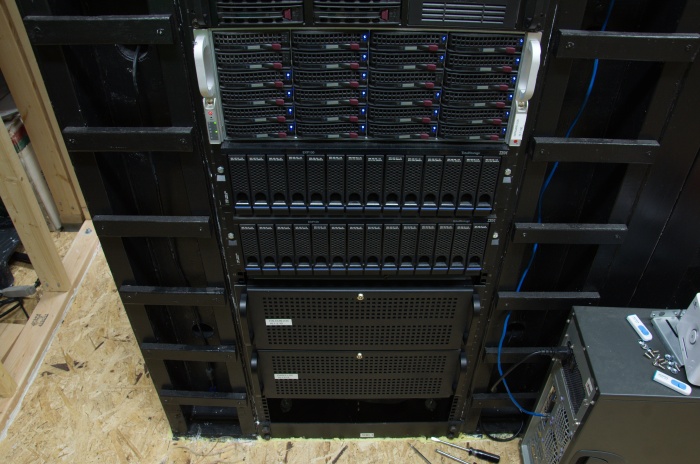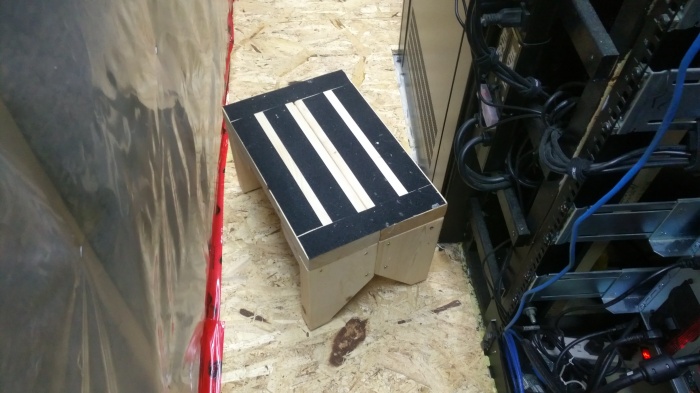MGCJerry
Limp Gawd
- Joined
- Sep 18, 2005
- Messages
- 144
This past weekend I bought a 42U cabinet for CHEAP ($150) off fleabay/craigslist (locally) to house all of my networking crap. Lets just say it juuuuuuuuust fits in a 2015 Kia Soul sideways with about 3' hanging out the back, and a 17 mile trip back home and lots of strange stares.  The old stereo stand I was using finally broke after 12 years of loyal service so it was time to move on.
The old stereo stand I was using finally broke after 12 years of loyal service so it was time to move on.
Old picture: I have several more servers and stuff since this picture was taken.

Now I've done my fair share of small home network installations, and have seen my fair share of cabinets and racks in person (Im not in IT, just a lowly electrician) but have never wired one myself. The only thing included with the cabinet was a shelf and a handful of nuts already clipped in.
So, does anyone have some good tips to start a cabinet n00bie?
Some notes:
• All devices, even ones I'm not actively using total is 24U.
• I'm also sourcing some cable management for my switch from the data division of the company I work for. I'll be comparing prices to what I might be able to get off ebay/craigslist.
• I plan on installing the shelf standing height so I can place a monitor & keyboard on the shelf to make management easier for those machines without IPMI abilities.
• I already bought a pack of 100 screws/nuts/washers
• I don't think I need a patch panel as there will only be a handful of cables going to outside devices.
• I still need to get rails for some of the servers I want to install. I'll need to get 3 more Supermicro rails, and 2 Proliant 360g3 rails.
• Cabinet is on casters, and all sides and doors (and keys) were included.
So does anyone have any specific tips for racking and even cable management?
Old picture: I have several more servers and stuff since this picture was taken.

Now I've done my fair share of small home network installations, and have seen my fair share of cabinets and racks in person (Im not in IT, just a lowly electrician) but have never wired one myself. The only thing included with the cabinet was a shelf and a handful of nuts already clipped in.
So, does anyone have some good tips to start a cabinet n00bie?
Some notes:
• All devices, even ones I'm not actively using total is 24U.
• I'm also sourcing some cable management for my switch from the data division of the company I work for. I'll be comparing prices to what I might be able to get off ebay/craigslist.
• I plan on installing the shelf standing height so I can place a monitor & keyboard on the shelf to make management easier for those machines without IPMI abilities.
• I already bought a pack of 100 screws/nuts/washers
• I don't think I need a patch panel as there will only be a handful of cables going to outside devices.
• I still need to get rails for some of the servers I want to install. I'll need to get 3 more Supermicro rails, and 2 Proliant 360g3 rails.
• Cabinet is on casters, and all sides and doors (and keys) were included.
So does anyone have any specific tips for racking and even cable management?
![[H]ard|Forum](/styles/hardforum/xenforo/logo_dark.png)


